
LA Metro Lightrail DTLA, John Nilsson all rights reserved
For the past 4 years on February 4, the Labor Network for Sustainability along with a coalition of transit unions, community organizations, environmental groups (including Sierra Club), and labor unions have organized
Transit Equity Day - a national day of action to commemorate the birthday of civil rights icon Rosa Parks by declaring that public transit is a civil right.
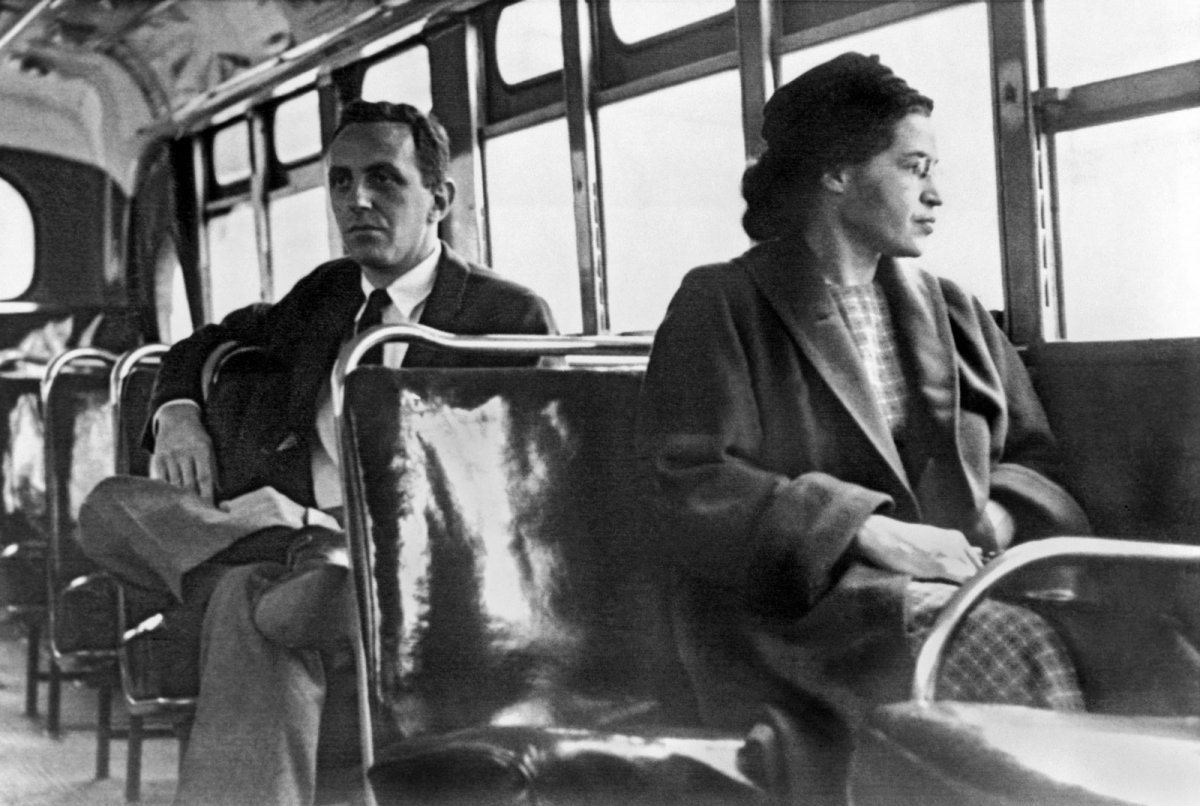
Rosa Parks sitting on a bus in Montgomery, Alabama, 1956. Underwood Archives/UIG/REX/Shutterstock.com
Many of us are familiar with Rosa’s famous tactic of refusing to give up her seat on a bus to demand the end to segregation in the Montgomery, AL transit system. Her actions inspired leaders of the local Black community to organize the Montgomery Bus Boycott, which is recognized as the spark that ignited the civil rights movement. We make the connection to this act of resistance to highlight the rights of all people to high-quality public transportation that runs on clean/renewable energy.
Educating our communities and local and federal officials about transit equity is vital to the work we do as environmentalists and as a broader movement for social justice.
Transit as a civil rights issue
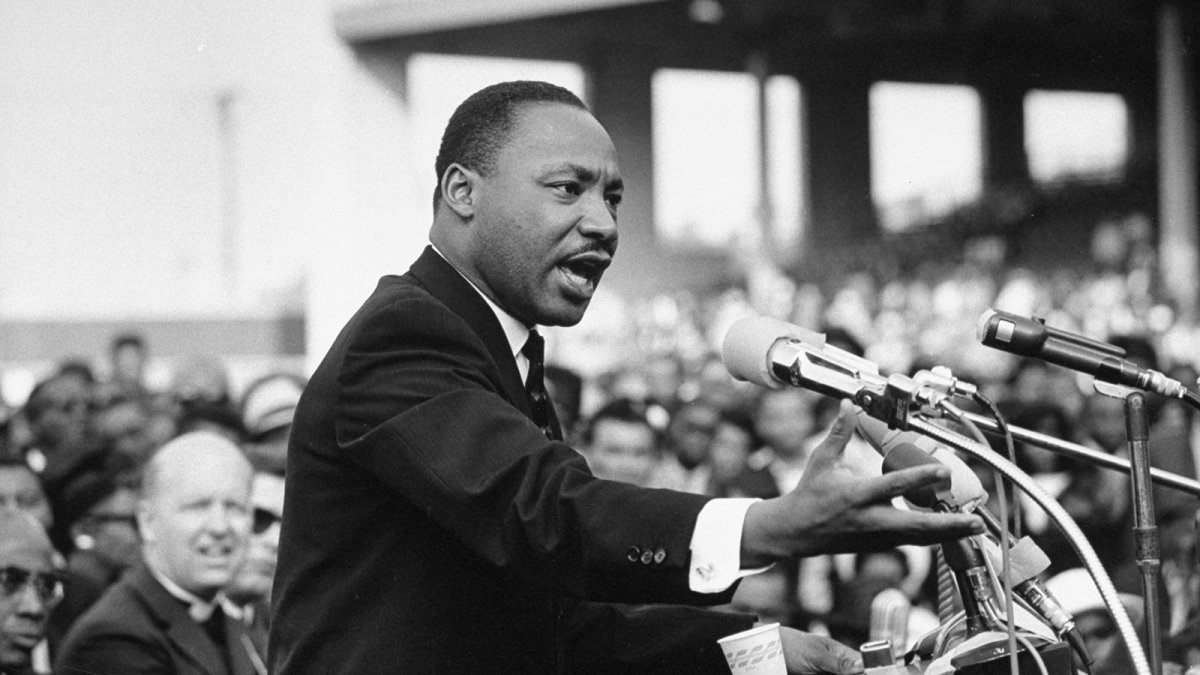
Dr. Martin Luther King Jr. - Creator: Julian Wasser | Credit: Time & Life Pictures/Getty Image Copyright: Julian Wasser
“Urban transit systems in most American cities have become a genuine civil rights issue because the layout of rapid-transit systems determines the accessibility of jobs.”
—Dr. Martin Luther King Jr.
Housing, education, and transportation are the three major kinds of infrastructure in the US that contribute to the separation of communities. Of these, transportation receives the least attention from those interested in social justice. Yet people must get from place to place.
Social mobility is such an essential part of the story we tell ourselves as Americans, but historically it has not been available to all, or available only in ways that channel people into inequitable opportunities, sometimes involuntarily and even in bondage.
Take Los Angeles for example, where lack of urban housing, sprawling development and
decades discriminatory underinvestment in transit in predominantly black and brown working-class communities results in some of the longest commutes times in the Country. Two cities in the Angeles region Palmdale, and Santa Clarita all rank in the top-10 in the US for
average round-trip commute times (85.4 mins and 69.8 mins respectively). While some of these ‘super-commuters’ choose to live farther away to enjoy more space, many—specifically low-income BIPOC individuals—do so simply because it’s too expensive to live close to where they work.
Sierra Club updated its
infill development policy in 2019 to target the root of these inequities. The policy calls on policymakers to steer their focus toward developing compact, walkable communities with a jobs-housing balance and encourages engagement, equity, and inclusion in development and planning. It’s critical for people of different social classes and backgrounds to be leading infill projects. Their engagement assures better access to schools, recreation, job training, and social services.
Now is the time for changemakers in the Angeles community to examine local planning and zoning work and compare with the updated policy, and do what we can to further prevent infill and sprawl that continues to act as a barrier to social mobility.
Transit, our health, and COVID-19
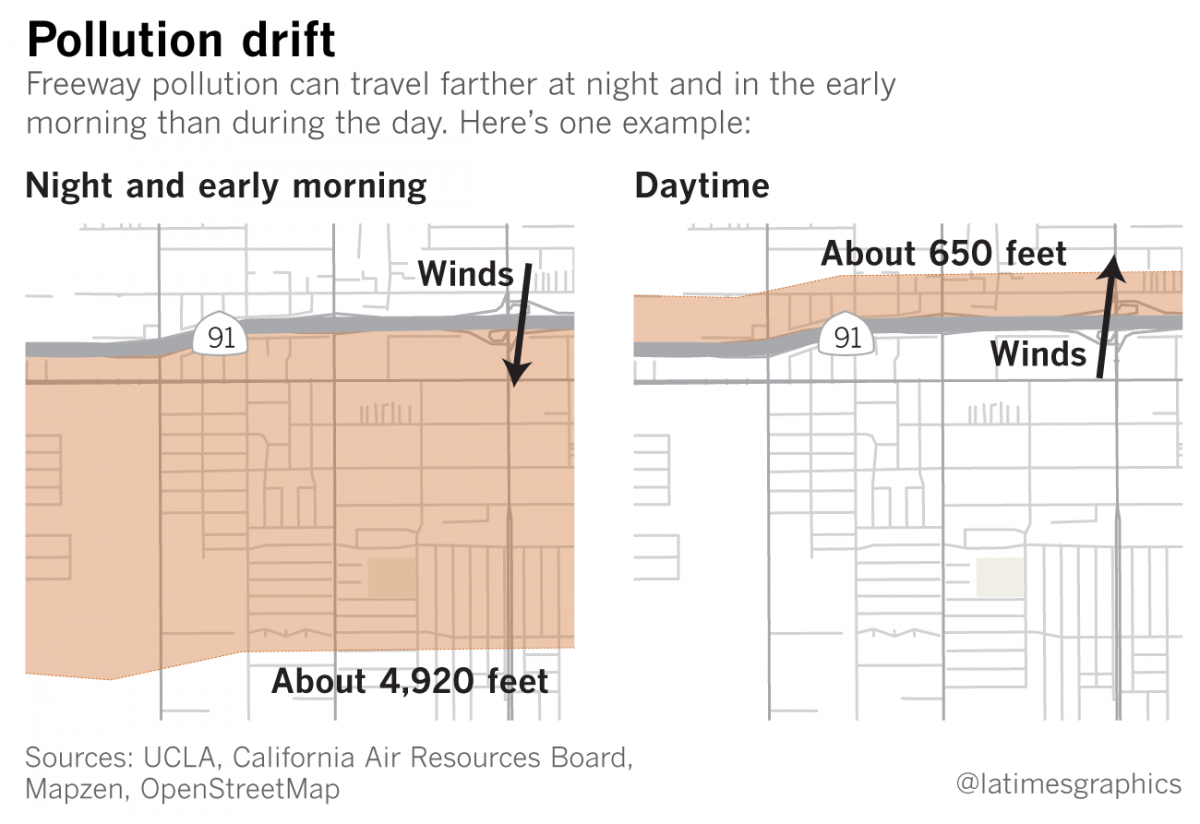
Credit: Los Angeles Times | Image copyright: Los Angeles Times
More than
1.2 million people live in high-pollution zones within 500 feet of a Southern California highway. Black road dust—mainly soot from diesel fuel trucks—that deposits on windows, shelves, and balconies are a common sight for people who live within these zones. And while these surfaces can easily be wiped down, it’s the small particulate matter that you can’t see —and are likely breathing in—that can enter the lungs and bloodstream and wreak havoc on health, especially the young and elderly.
Heading into the new year we breathe a collective sigh of relief as the new Biden Administration is sworn in. Now is the moment to demand the federal government restore the waiver that gives California the authority to set clean air standards for cars and grant a new waiver allowing CA to put into effect the nation’s
first and most ambitious clean truck rule to reduce air pollution and protect public health.
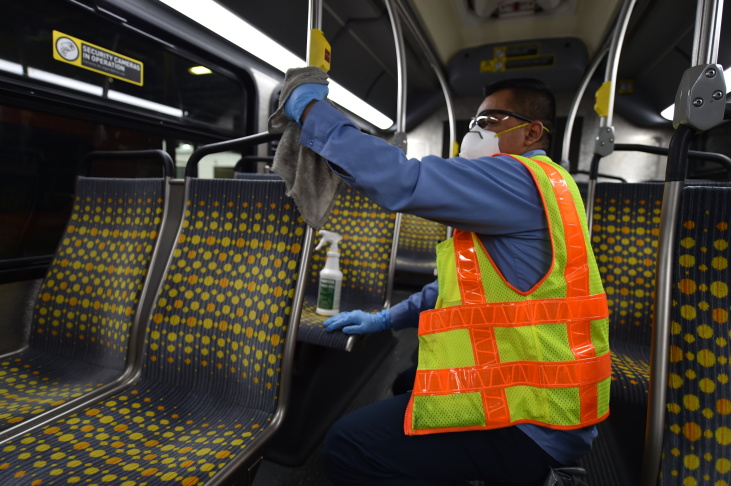
L.A. Metro officials say employees are continuing to clean and disinfect all its buses and trains once a day, which happens overnight at their respective divisions. (Courtesy Los Angeles Metro)
Beyond cleaning up vehicle pollution, transit equity also means investing in transit systems and transit workers hit hard by the coronavirus pandemic. While overall ridership decreased due to stay-at-home orders, many essential workers rely on public transit to get to work, the store, or the doctor’s office.
Cuts to transit services as a result of revenue shortfalls would have a devastating effect from which it would take years, decades even, to recover. Transit workers would lose jobs, essential workers would have a harder time getting to and from work, students would not be able to attend class, those with disabilities would or who are homebound would not be able to depend on caregivers, people would not be able to access services like the DMV or employment agencies, the list goes on.
The time to educate decision makers about transit equity is more urgent than ever—and the call must stem from all generations, economic backgrounds, genders, mental and physical abilities. Transit Equity Day events include a
National Community Hearing featuring testimonies from workers and riders who depend on transit on February 3.
Try nominating a member of your network to testify or add your voice online.
Transit and the outdoors
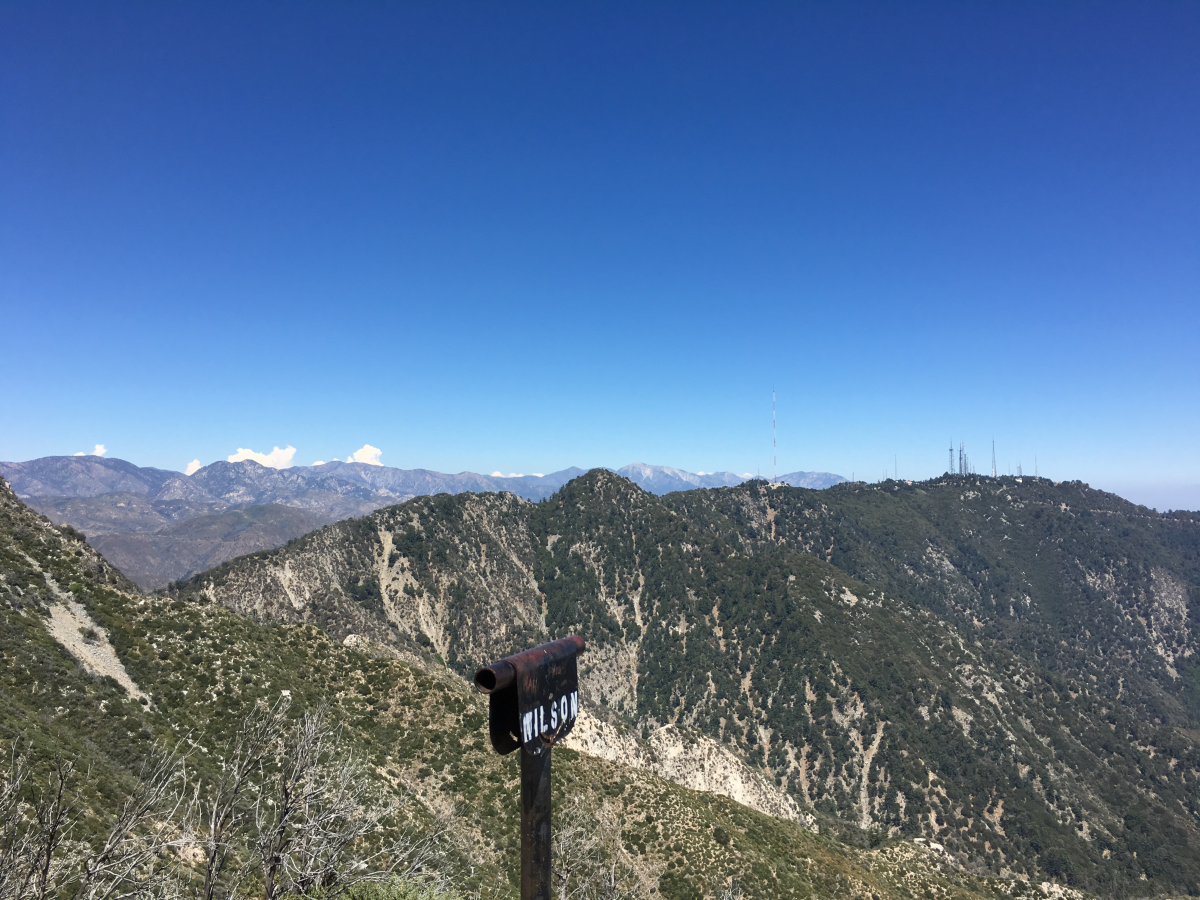
Inspiration Point Altadena, CA Courtesy of Jonathan Howard
As the coronavirus pandemic sends more people outdoors many populations are finding themselves marginalized when it comes to open spaces. We’ve explored the disparity of access to open space for people of color in the past whether it’s access to transportation, entrance fees or just feeling plain unwelcome.
Chapter volunteers and organizers are working to correct that issue, such as in Pasadena where a ‘Transit to trails’ bus service has been pushed for connecting the Metro Gold Line at Memorial Park Station to the San Merrill Trailhead in Altadena and was approved in 2018. The new line expands access to open space recreation and provides an improvement to regional transit connectivity for local residents.
“I think having that victory solidified the idea that a transit to trails system for our San Gabriel mountains can be a reality. The Pasadena transit to trails pilot project showed our decision makers and other nearby cities that this is possible. Right now the Sierra Club is supporting other transit to trails projects for the city of Duarte and for the Mount Wilson area,” said Roberto Morales, Senior Organizing Representative for the San Gabriel Mountains Campaign.
Transit and the environment
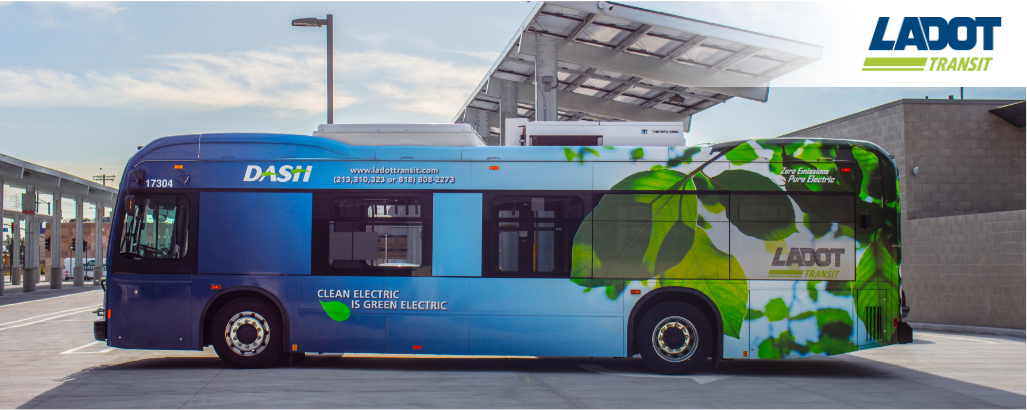
Photo of LA DOT’s first electric DASH bus Photo credit: LA DOT | Image copyright: LA DOT
Equally important is the message that investment in transportation that runs on clean/renewable energy is a key strategy in combating climate change, humanity’s greatest existential threat.
Humans are playing a dangerous game with fossil fuels. The more carbon we take out of the ground and add to the atmosphere—and a lot of it permeates into our oceans—the more dangerous our situation becomes. When we put too much carbon in the atmosphere things overheat, oceans warm, ice caps melt, sea levels rise. Climate change also fuels dangerous storms, droughts and wildfires that put lives and our nation’s economy and security at risk.
There is a vast base of industry that contributes to the emission of greenhouse gas and the transportation sector is by far the largest source of this climate pollution in the US (29%) and even more so in California (39%). In a city like Los Angeles where nearly everyone drives, electric vehicles (EVs) are seen as part of the solution and have the potential to become even cleaner as we transition our power grid to renewable energy,
but our momentum is still too slow.
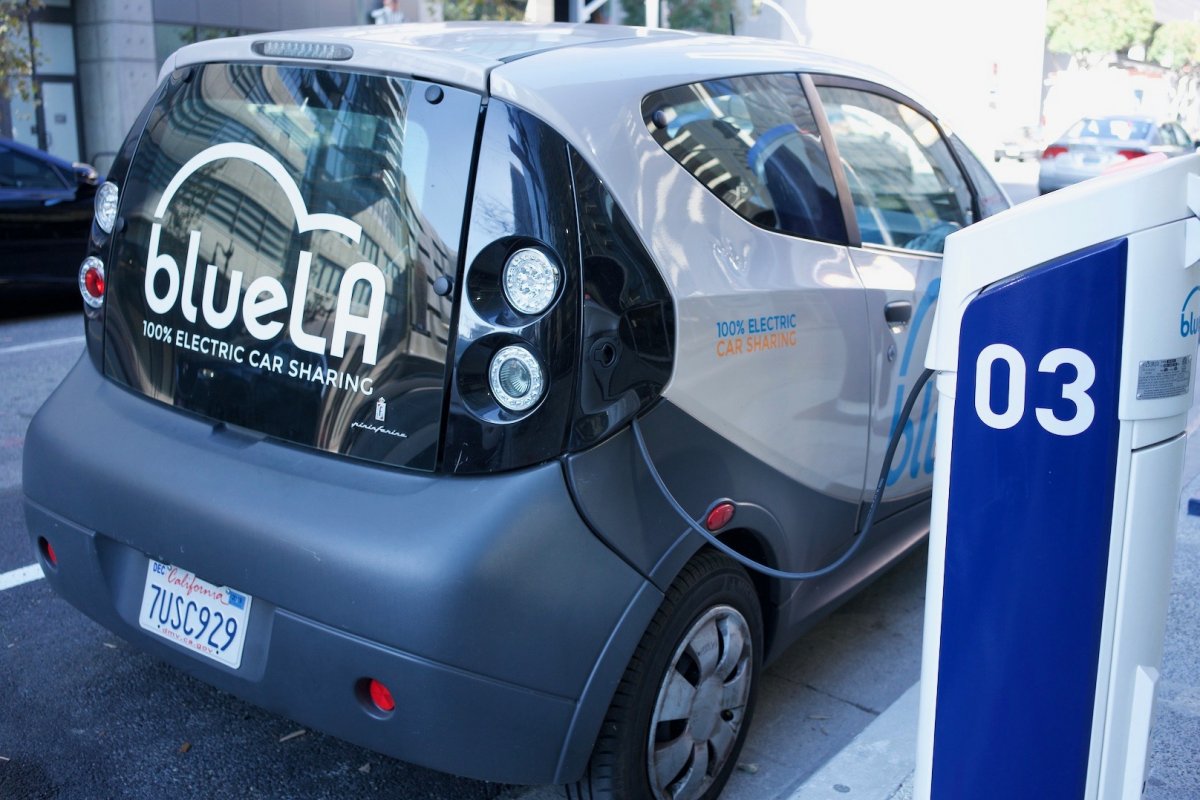
Blue LA EV charging in Downtown, Los Angeles Photo credit: John Nilsson all rights reserved
More frequent, climate-fueled disasters heighten the need and urgency for not just affordable and accessible public transportation but that which is powered by clean and renewable energy. That means transit expansion, clean freight from the ports, and zero-emission busses in addition to good dense affordable infill development to reduce the need to drive, building electrification, and complete green streets for walking, biking and scooting.

Man rides electric unicycle through Downtown Los Angeles’ Diamond District, John Nilsson all rights reserved
“The deployment of zero emission vehicles in frontline communities represents more than just the advancement of technology or emission reductions. Getting ZEVs deployed first into frontline communities so they can replace polluting fossil fuel trucks and buses will improve public health and air quality, while also improving residents quality of life due to noise reductions and other benefits.” Carlo De La Cruz, MyGeneration Associate Director
“For decades these communities have borne the brunt of poor air quality and suffered the health costs of smog and diesel. Zero emissions not only represent a decarbonized future, but one where equity is centered, and the job benefits of building that renewable future can include the communities that have been at the frontlines of transportation and goods movement.”
Interested in how you can contribute to making transportation more sustainable and equitable in the Angeles region? Check out the Chapter’s
Transportation Committee website and sign up to attend a monthly meeting.









